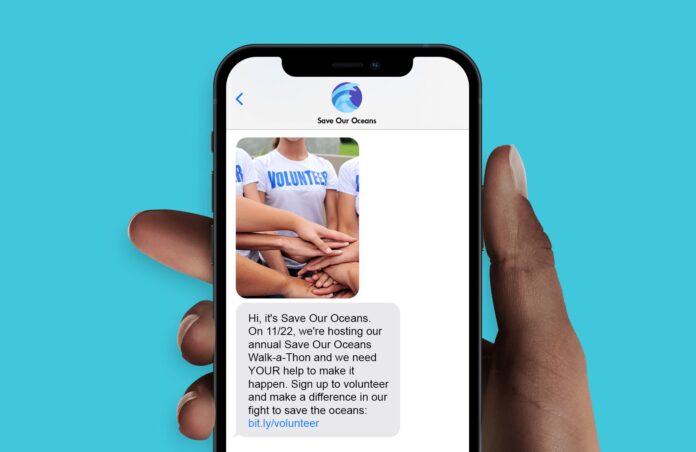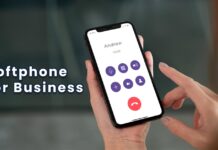
In today’s digital world, nonprofit organizations are using technological innovations to maximize their impact. Text messaging software has proven to be a highly effective tool for connecting with audiences, driving engagement, and achieving overall mission objectives.
In this article, we focus on the best practices for integrating such software into nonprofit outreach programs. Keep reading to discover how you can leverage text messaging to take your nonprofit outreach to the next level.
Understanding the Power of Text Messaging Software in Nonprofit Outreach

Nonprofits rely heavily on communication and engagement with their communities, and text messaging software offers an efficient way to achieve these goals. This tool enables automatic, personalized communication with potential donors, volunteers, and beneficiaries at a mass scale.
Text messaging is an interactive communication medium that nonprofits can use to send alerts, updates, event invitations, or donation requests. It fosters instantaneous communication and responses, which can be critical in certain situations.
Furthermore, text messaging has proven to have higher open and response rates compared to emails, thus increasing the chances of effectively reaching out to communities.
The bottom line is that understanding and effectively utilizing the power of texting software for nonprofits can greatly boost outreach efforts.
Benefits of Utilizing Text Messaging Software for Nonprofit Communication

Nonprofits have several reasons to prefer texting for their communication needs. First, text messages offer immediacy that emails or letters cannot match. In emergencies, this immediacy can make a significant difference.
Secondly, text messages have a higher chance of being read than emails. With an average open rate of 98%, you can be guaranteed most recipients will read the message.Texting also allows for quick feedback. Recipients can respond immediately to messages, thus enabling real-time engagement.
Finally, text messaging software allows for personalization and segmentation. Nonprofits can send different messages to various groups based on their involvement and interests, thus increasing the relevance and impact of their communications.Selecting the Ideal Text Messaging Software for Your Nonprofit Outreach

Selecting the right text messaging software is crucial for reaching your outreach goals. Critical factors to consider include the software’s ease of use, customization options, automation capabilities, and reporting functionality.
Ease of use ensures everyone can comfortably use the software, while customization allows for more personalized messages. Automation saves time by enabling the scheduling of messages or responses, and reporting functionality helps measure the success of the outreach activities.
In addition to these features, nonprofits should consider the scalability of the software. As the organization grows and its messaging needs expand, the software should be able to handle the increased demand.
Finally, good customer service support is instrumental in resolving any challenges that may arise when using the software.
Implementing Text Messaging Software Strategies for Effective Nonprofit Outreach

Effective implementation of text messaging software requires a clear strategy that outlines what the organization wants to achieve. Texting can be used to increase volunteer engagement and donor retention or drive attendance to events, among other goals. Therefore, a well-articulated business plan is critical in guiding the implementation process.
When launching a text messaging campaign, nonprofits should provide clear instructions on how to opt-in to receive messages. It’s important to respect people’s privacy and only send messages to those who’ve given consent.
An optimized text messaging strategy will also include a regular and consistent communication schedule that doesn’t overwhelm the recipients.
Moreover, appropriate response management is key. Whether automated or manual, responding to feedback or inquiries includes the audience in the conversation and opens avenues for stronger connections.
Case Studies: The Success of Text Messaging in Nonprofit Outreach
Many nonprofits have successfully used text messaging to boost their outreach. For example, the Red Cross leveraged text-to-donate campaigns during massive humanitarian crises, gathering significant contributions from the public. These campaigns’ success was rooted in the immediacy, accessibility, and convenience of text messaging.
Another example would be 826 National, an organization that launched a text messaging education program for students who needed tutoring. The program saw a significant increase in participation rates and improved learning outcomes, demonstrating the power of text messaging in engaging the youth.
These cases emphasize the potential of text messaging software in not only raising funds but also directly benefiting those served by the organization.
Other instances of success stories could include nonprofits using texting for volunteer mobilization, awareness creation, and facilitating stakeholders’ communication. These varied applications further underline the versatility and effectiveness of text messaging in nonprofit outreach.
Legal and Compliance Considerations

When using text messaging software for nonprofit outreach, it’s crucial to comply with legal regulations. Ensure you follow laws like the Telephone Consumer Protection Act (TCPA) and include opt-in/opt-out mechanisms. Respect recipient preferences and prioritize compliance to maintain a positive reputation and avoid legal issues.
Data Security and Privacy
Safeguarding donor and volunteer data is paramount. Implement robust security measures, including encryption, to protect sensitive information. Nonprofits must maintain the highest standards of data privacy to build trust with stakeholders and uphold ethical practices in handling personal information collected during text messaging interactions.
Analytics and Measurement
Measuring campaign success is vital. Employ analytics tools to assess the impact of text messaging outreach. Track metrics like open rates, response rates, and conversion rates to make data-driven decisions and refine strategies. Regular analysis helps nonprofits optimize their text messaging efforts for maximum effectiveness.
Integration with Other Outreach Channels
Text messaging can complement other communication channels. Consider how it can align with email, social media, and website outreach. Maintain a consistent message across platforms to reinforce your nonprofit’s brand and enhance engagement. Cross-channel promotion can amplify the impact of your outreach efforts, reaching a broader audience.
Summary
Overall, text messaging software can revolutionize the way nonprofits connect and engage with their audience. The correct implementation and strategy are key to exploiting the full potential of this powerful tool. With the insights provided here, nonprofits can effectively use text messaging to enhance their outreach and achieve their mission objectives.



